
Work smarter not harder! Yes, this is not just an office motto, it applies to fitness as well. It may sound surprising to you, but it's more than possible.
In this Blog, we will dive into the science behind why walking is an incredibly smart move for weight loss.
Working with so many clients in the past, I know for many of you out there, the thought of running on a treadmill might feel more like a punishment than an enjoyable activity. if you are someone who wants to lose fat but isn’t a huge fan of running on the treadmill, this video is for you.

In a 2014 study (1), they conducted an experiment on two groups of obese women. The first group walked for 50-70 min only three times a week. The second group, which was the control group, maintained their sedentary lifestyle. After 12 weeks, they did body measurements again and it showed that the group who walked three times a week lost fat around their belly and improved their insulin resistance. This clear difference between the two groups shows the power of something as simple as walking for weight loss and better health.

In my own personal experience when walking was my main form of cardio, I saw an accelerated loss of fat tissue, you could see this comparing my 2019 competition preparation where running was my main form of cardio to 2020 preperation where walking was my prodominant form of cardio.

Getting under 10% body fat and getting rid of stubborn belly fat was much easier compared.
The truth is walking is an often overlooked form of cardio, but according to many studies done in the field, it is very effective for fat loss. In order to understand this well, we need to first understand what are the main fuels your body uses when you move or perform your exercise:
Our body mainly depends on two types of fuel:
Our bodies prioritize carbohydrates as the primary source of energy because of their vital role in fueling all of our cells, particularly the brain. And then comes fat.
1-Carbs:
Carbs, primarily broken down into glucose, is the our body's favorite source of energy. especially for high-intensity activities like HIIT or fast running. Consuming carb-rich foods such as bread turns them into glucose for immediate energy and stores excess in muscles and liver as glycogen for future use. Like a quick battery in a remote, this glycogen provides fast energy during intense workouts but its stores are limited and need replenishing.

The second source is
2- Fat: Fats are a more long-lasting energy source, their stores are almost limtless. When you perform prolonged or low to moderate-intensity activities (like walking), your body tends to use more fat for energy than glucose. However, Fat oxidation or burning is a slower process, but it provides a lot of energy. It's like using logs to fuel a fire - they take longer to burn, but they burn for a long time. That's why, for endurance activities like a marathon or activities like walking, your body taps more into fat stores.

3- Protein: Protein is not a primary energy source, it is like a backup, especially when carbohydrate levels are low. This can be compared to a car running on a spare tire, it is not ideal but functional when necessary. This can happen during extreme exercise or starvation, when glucose and fat are depleted, the body can use protein, that leads to muscle loss if not replenished by adequate protein intake.

To sum up:
However, both glucose and fat are always being used to some extent—it's just the proportion that varies depending on the intensity and duration of the activity.
With this being said, this is another advantage of walking apart from using fat as the main source of energy, it helps you prevent some of the muscle mass loss that may occur during a caloric deficit.

By engaging in regular walking or other forms of moderate exercise, you signal your body that your muscles are still in use and needed. This can help encourage your body to primarily use fat stores for energy, preserving muscle mass. Also, maintaining muscle mass during weight loss can help prevent a decrease in your metabolic rate.
Now we know why walking is a much superior cardio form compared to running for fat loss.
But how many steps should we do to lose fat?

According to Mayclinic.org, the Average American gets between 3,000-4000 steps a day. In my experience, this is overall very low activity.
Research has also shown you burn between 250 – 600 calories per 10,000 steps daily.
Let’s take the former of 250 steps, at the end of the week you burn 1750 calories, in a month, 7000 calories, and in a year, 84,000 calories. We know that 1lb of
fat roughly equates to 3500 calories, which means in a week you can burn half a pound of fat, and in a month 2lb and in a year 24lb of fat.

So with myself and all my clients, we start at a minimum of 8,000 daily steps. If we are losing 1-2lb of the scale each week on average then that’s all the cardio we do.
In my experience, 1,000 steps are equal to 10
minutes of brisk walking. So depending on how much time you have in
your day you can increase these steps.
There are many ways you can get creative and integrate more walking into your daily routine to get to 10K steps a day. Things like:





Does walking have the same health benefits as running?
According to a study (2) published in the Journal of the American College of Cardiology (Picture shown below), walking for 15 minutes and running for 5 minutes were both shown to reduce mortality by 10%, similarly, running for 20 minutes and walking for 1 hour decreases mortality by 35%. This indicates that even though running might be more time-efficient, walking still offers significant health benefits.

Another study done in 2013 concluded that both walking and running can help in reducing the risk of high blood pressure, high cholesterol, diabetes, and heart disease. So, walking can provide nearly as much benefit as running.
Walking is easy

Another great point about walking is that it is a low-impact exercise, which means it's easier on your body. You can also do it for a longer period without feeling as tired or fatigued as you might after running. Also, you can perform it anywhere you want!
Additionally, walking is less likely to lead to injuries compared to more intense forms of exercise like running. In fact, walking has a low injury risk, between 1 to 5 percent, while running jumps that number up significantly, with a 20 to 70 percent chance of injuries like stress fractures and shin splints.
And the beauty of walking is that you can easily adjust the intensity to suit your fitness level. Or if you have special conditions that have stopped you from being able to run, walking is a great replacement.
Fasted walking

While the scientific studies on fasted training often show mixed results. Speaking from personal experience, I've found great benefits in integrating fasted walking into my daily routine:
Firstly, I've noticed that when I do a brisk morning walk before breakfast, it tends to suppress my appetite. There's also something about starting the day with physical activity that makes me more mindful of my food choices later.
Secondly, I love fasting and this prolongs the fasting period in an effortless way.
Third, I don't like to walk on a full stomach, walking before eating just feels better for me. I can avoid the uncomfortable feeling I sometimes get when I walk after a meal.
Fourth, there's a mental part to this that's pretty rewarding. Each morning walk I finish, makes me feel proud, and it starts my day off right. It's like a small win that gives me a boost of positivity that lasts the whole day.
That said, I think walking before breakfast could be a great addition to a healthy lifestyle for a lot of people. But remember, this is just my personal experience. Everybody is different, and what works for me might not work for everyone else.
Non-Physical benefits

Walking doesn't just help you physically - it's a mood booster too! Studies have shown that consistent walking can alleviate symptoms of depression and anxiety. Getting out and walking in the sun clear your mind and reduce stress, all while burning fat and getting some vitamin D.
A recent study conducted in 2022 showed that (3) adults who engaged in just half of the weekly recommended amount of physical activity - which is equivalent to roughly 75 minutes of brisk walking per week - had their risk of depression lowered by 18% compared to those who didn't do any physical activity. Now, if these adults met the recommended amount of physical activity for the week, which is about 2.5 hours of brisk walking, their risk of depression dropped even further by 25%.
Interestingly, According to the U.S. Centers for Disease Control and Prevention, if all adults could do at least 150 minutes of physical activity per week, we might prevent 1 in 9 cases of depression. That's a powerful testament to the mental health benefits of simple activities like walking!
So, the bottom line is, both walking and running are very effective for fat loss, especially when it is combined with a caloric deficit. If you are someone who has little or no activity or if you are extremely overweight, walking is an excellent choice to start your fat loss journey with.

One major point to consider is your personal preference and lifestyle. If you enjoy running and have 20 minutes to spare, then running could be a good option for you. However, if you prefer a more relaxed pace or have more time to spare, walking could be a better fit. Remember, the best exercise is the one you enjoy and can stick with in the long run. Whether you choose to run or walk, the most important thing is that you're staying active and moving your body.

Belly Fat! it's stubborn, it's frustrating, but you are not alone. it's a problem millions around the world are fighting every day.
But here's the good news. By the end of this blog, you'll learn the easiest, most effective strategies to get rid of your belly fat and NO it is not Cardio!
Trust me! I've seen all the fat loss struggles. I have been there myself multiple times and I've experienced it through the journeys of my clients. That is why today I will share with you the same fat loss strategies I use with my client that will change the fat loss game for you forever.
Alright, let's cut to the chase. The internet is packed with fat loss advice, but here's the kicker - a 2014 study found that less than 20% of these sites actually hit the mark on key stuff like nutrition, exercise, and weight loss tactics. (1) That’s right.
This is why it is very important to get your information from health professionals in the field. This will save you time and keep you away from wasting your energy on stuff that just doesn't work.
If have ever tried to lose weight, you will know that belly fat is typically the most stubborn. Let me briefly explain why:
1- Cell Receptors: Our fat cells have two types of receptors: Alpha and Beta. Alpha receptors slow down fat burning, while Beta receptors speed it up. And guess what? Our stubborn belly fat has more Alpha receptors. It's like having more brakes than gas pedals. But don't worry, I've got a way around these stubborn alphas, and I'll share that in this video.

2- Blood Flow: The problem here is that fat around our belly has less blood flow. Think of blood flow as highways for fat to be transported and used as energy in your body. Less blood flow means less highway access. This makes it tough for your body to transport and burn fat in these areas.

3- Insulin Sensitivity: Insulin is a hormone that helps our cells use sugars and promote fat storage. Now, our stubborn belly fat is super sensitive to insulin, meaning it stores fat more and releases it less.

To lose any kind of fat and especially that lower belly fat, it’s the first rule, you need to be on a calorie-deficit diet. This is where the total calories burned each day (exercise, non-exercise activity, metabolic rate) outweighs the calories you consume from food and drink.

A lot of people try cardio exercises to be in a caloric deficit and get rid of these stubborn tissues, but the truth is, there are smarter and more sustainable ways to do this
According to the Centers for Disease Control and Prevention (CDC)
a 154-pound person can burn anywhere between 140 and 295 calories in 30 minutes doing cardiovascular exercise:
So many people do 30 minutes of running and expect magic to happen. But this is neither super effective nor sustainable for so many people.
So what if I told you, you can burn more calories while sitting down?
This happens when you speed up your metabolism.
In simple terms, metabolism which is scientifically called TDEE is the process through which your body converts the food you eat into the energy it needs to power everything you do, from moving to thinking to digesting the food.
Now, the speed of your metabolism is often referred to as metabolic rate - and this is where many people get stuck. You might be one of those who think, "I was just born with a slow metabolism. There's no way I can change it. Well, that is not entirely true.
But what does a slow metabolism mean?
Consider we have two men who are both 80 kilos and are 30 years old.
A person with a slow metabolism might have a metabolic rate of 2000, this means he has to eat between 1500-1600 in order to be in a caloric deficit and lose fat.
But a man with a fast metabolism has a metabolic rate of 3500, this means he can lose weight if they eat between 3000-3100 calories in a day.
So how can we speed his metabolism up in order to be able to eat more and lose weight?
1- Eating more protein:

On average, a person uses about 10% of their daily energy expenditure digesting and absorbing food.
Protein takes the most energy to digest (20-30%) of total calories in protein eaten go to digesting it). Next is carbohydrates (5-10%) and then fats (0-3%).
So protein is the most thermogenic and it can boost your metabolism.
Additionally, protein is more satiating, it helps you stay full for longer compared to carbs and fat, hence it helps you stay on track.
Protein also helps you preserve your muscle mass while you are in a caloric deficit. Meaning you will end up losing more from your body fat when the numbers go down on the scale.
A 2010 study compared the calories burned from eating processed food and whole food. So, 17 participants were randomly given either a whole food meal or a processed food meal that was equal in calories.
The whole meal sandwich had more protein, more fiber, and fewer carbs.
Eating whole food took 46.8% more energy to digest on average than processed food! (2). (137 Kcal vs 74 Kcal)
This is why all calories aren’t the same.
100g of chicken breast has 165 calories, but so does a small donut.
But they aren’t equal!
So how much protein to take?
If you are on a caloric deficit, a protein intake of 0.72-1 grams per pound of body weight is recommended.
That means, if you are 200 pounds, you need to take in the range of 144-200g/Day.
I recommend going as high as 1.3-1.5g of protein per lb of body weight if you are weight lifting while trying to lose fat
This way you will be losing fat and maintaining or gaining muscles simultaneously.
2- Weight training
More muscle tissues equals burning more calories at rest.
Weight training is one of the best ways to speed up your metabolism. If you have more muscle mass, you are burning more calories at this exact moment lying down watching this video compared to someone who has less muscle mass.
Having more muscles makes the road to weight loss less bumpy. Because muscles are metabolically active, the more muscles you have, the more calorie you burn just by sitting down.
Here is an interesting fact: 1 pound of muscle burns around 6-7 calories per day while 1 pound of fat only burns only 2 calories per day. This is three times the amount!
Consider this example, if someone has 45 pounds of muscle mass, that means they burn 315 calories from their muscle if they sit down for the whole day. But If someone has 80 pounds of muscle mass they will burn 580 calories while sitting down. This is true even if they are both 200 pounds.
So boosting your lean muscle mass through resistance and bodyweight exercises can increase your body's caloric burn rate.
So having more muscle mass is not just the aesthetic looks. When you build more muscle, it will improve your strength and your confidence, you can eat more and you’ll burn more calories at rest because your body has new muscle tissue to sustain.
So train hard, go heavy, and do more compound exercises.
3. Sleep

Burning fat by sleeping? Yes, you heard me right.
1. First: let’s talk calories
We burn calories while we are sleeping, the faster your metabolism, the more calories you burn while sleeping.
The amount of calories burned is calculated per hour, so if you sleep for 5 hours instead of 7 hours, you will burn less calories. Additionally, that also means you will be awake for more hours and increase the likelihood of consuming more calories.
A person who weighs 150 pounds might burn 46 calories an hour or between 322 and 414 calories a night. And a person who weighs 185 pounds might burn around 56 calories or between 392 and 504 calories for a full night of sleep. (4)
So make sure you get 7-8 hours of sleep
2. Reason number 2: Sleep is when most of the cell repair and hormone production happens.
Let me explain what happens in your body when you don’t get enough sleep:
When you sleep for less than 7 hours:
A 2012 Swedish study published in The Journal of Clinical Endocrinology & Metabolism (2) looked at the connection between sleep and junk food cravings and choosing bigger portions. This is very interesting, the study shows that lack of sleep does not only increase calorie intake by 250-300 calorie but also increase cravings for high-carb meals, Junk food, and sweets. (3, 4). So, there is a science behind why after a restless night of sleep or after only getting 4-5 hours in, you find yourself reaching for that chocolate muffin or large pizza.
Another study found short sleep duration to be significantly associated with greater waist circumference, which is an indicator of the accumulation of belly fat (5)
This is why not getting enough sleep can sabotage your weight loss journey and lead to weight gain.
The general guideline for adults is 7-9 hours of sleep a night. Prioritize your sleep and see how much easier your fat loss journey becomes.
(You can check my channel, for more sleep hygiene tips.)
4- Ramp up your NEAT
NEAT stands for Non-Exercise Activity Thermogenesis. It is the daily activities and movements that are not structured exercise, it includes typing at your desk, standing, bringing groceries to the car, fidgeting, standing up from your desk to even singing in the shower. just all the subconscious movements and light activity you do. This varies among people depending on your job and daily chores.
NEAT is different for everyone, but on average it's between 15% and 30%.

High levels of NEAT are advantageous from a fat loss perspective and are believed
to be largely responsible for the massive differences in the total metabolic rate we see.
When in a caloric deficit for an extended period of time, your body senses the decline in food intake and automatically decreases energy expenditure by down-regulating NEAT.
NEAT increases with overfeeding and decreases with underfeeding. So, as you continue to diet, your body finds subtle and subconscious ways to conserve energy and decrease your NEAT, which slows down your metabolism. This means that even though you may be doing intense workouts and hitting your macros, you may find yourself being sedentary for the rest of the day.
This is proven by a study done by Bouchard et. Al. The response to exercise with constant energy intake in identical twins. Research showed that although the twins had the exact same diet and training routine, the twin who moved more, stood up more, and had an overall higher NEAT lost 18 more pounds in 90 days.
So here is what I recommend to increase your NEAT:
1- Take the stairs whenever you have the option
2- park your car farther whenever you are going to the grocery store, gym, or work
3- Instead of taking a car for short trips, consider walking.
4- Walk in between sets at the gym
5- Walk while on the phone
So there you have it, losing belly fat doesn't have to be a battle of endless cardio and extreme dieting. Instead, the solution lies in comprehensively transforming the way your body functions, from the inside out.
These strategies help you build and preserve lean muscle mass, which boosts your caloric expenditure further. You can enjoy eating more food while losing fat!
This is not to say cardio isn’t useful, but you shouldn’t solely depend on cardio for fat loss.

What is testosterone hormone and why is it such a hot topic?
Testosterone is the male sex hormone that is made in the testicles of men. it is also produced in smaller quantities in the ovaries and adrenal in women.
Testosterone is responsible for sexual drive and plays a significant role in determining your body composition, it helps you develop muscle mass and strength and regulates fat distribution in your body. If you're wondering why men and women tend to store fat differently and why men have more muscle mass, testosterone is a big part of the answer!
Durining puberty, Testosterone promotes secondary male sexual characteristics like the growth of body and facial hair, deepening of the voice, and broadening of the shoulders.
But it doesn't stop there. Testosterone is also essential for maintaining healthy bone density and production of red blood cells. It also largely affects your mood and energy.
Before we delve into the 8 steps, I would like to shed light on a recent Testosteron trend backed by some major studies in this field.
I will start with one very interesting research done in 1996. They took 43 men and divided them into four groups:
Group 1 received a placebo or fake injection with no exercise
Group 2 received a fake injection with performing weightlifting exercise
Group 3 received testosterone injections with no exercise.
Group 4 received testosterone with performing weight-lifting exercises.
The results were striking! Now obviously the men who received testosterone injections
and performed weightlifting saw the greatest increase in muscle size and strength, but here is the shocking part, the group who received testosterone injections and performed no exercise gained more muscle mass than the group who were on placebo and performed exercise. (1)

The takeaway from this study is the magic power high Testosterone level has on your muscle mass and body composition without even lifting weights. But there is more to it, Imagine living life with more energy, drive, and optimal health. Yes, It's possible with higher testosterone levels AND you can boost it naturally!
Testosterone is the secret weapon for every man’s optimal health BUT here's a shocker:
The data shows that our generation is actually running on lower testosterone than our fathers and grandfathers.
According to multiple studies, There has been an alarming decline in Testosterone over the past 40 years.
Research published in 2007 collected samples from 1532 American men. The data were collected for three-time intervals: 1987-1989, 1995-1997, and 2002-2004.
The results were staggering!! It showed that testosterone level has declined at a rate of 1% per year since the 1980s and NO it is not related to aging! (2)
Fast-forward to 2020, the American Urological Association conducted another research and showed a 20% drop in testosterone levels between 1999 and 2016. (1)
Now, get this: Today's average 22-year-old man has about the same testosterone levels as a 67-year-old from the year 2000! Mind-blowing, right?
If we compare the average testosterone throughout the last 3 decades! We will see the shocking trend!

420 ng/dl is quite close to being officially low testosterone, which is 300 ng/dl according to the American Urological Association.
Furthermore, it falls below the normal range reported in most studies conducted before 1980. This suggests that the average man today has lower testosterone than nearly all men from the 60s, 70s, and early 80s.

You might be wondering what low Testosterone does to your body?
Normal Testosterone Level falls between 300-1000 ng/dl, being close to the lower limit will affect your performance, energy level, sex drive, and muscle mass and increase your body fat percentage.
Now, you might be part of the testosterone decline that's been happening over the past 40 years. So let’s reverse this trend!
What do you think is the magic ingredient for Testosterone?
Cholesterol, Yes you heard me right, cholesterol isn't all bad!
Cholesterol is the building block of testosterone hormones In fact, it's vital for your body and we will talk about the importance of diet later.
Let’s start!
Tip No.1 Exercise
First up, exercise, particularly weight lifting and High-Intensity Interval Training (HIIT).

If you are exercising regularly, you have a higher testosterone level than those who are physically inactive. Heavy strength training and HIIT are the best workouts for your testosterone boost. and it might contribute to long-term lifts in Testosterone.
A study published in 2008 took 102 men who previously didn’t exercise much and put them on a year-long exercise program. Their levels went up by 14.5 percent! (4)
My advice for weight training is, Lift Heavy, Do more compound workouts that use multiple large muscle groups—like squats, deadlifts, bench presses and lastly do More Volume.
The second Exercise is, HIIT
If you love HIIT training, you’re in luck. many studies show that HIIT is a great T booster
A study of 30 men aged 30 to 45. These guys participated in three sessions a week of high-intensity interval training and strength training. And guess what? After just one hour of this combination, they saw a 36.7 percent increase in their testosterone levels (5).
What this tells us is that even if you're starting from scratch, with little to no exercise in your routine, it's not too late. You can still make significant changes to your testosterone levels with regular workouts.
Tip No.2 Sleep


Your sleep time and quality are no Joke! Think of sleep as your body's natural recharge time. Just like your phone, your body needs sleep to recharge its energy, repair itself, and yes, produce hormones like testosterone.
Our bodies work on a natural daily cycle called the circadian rhythm. As part of this cycle, our bodies increase testosterone production when we're sleeping. In fact, peak testosterone production occurs during your sleep hours, but if we don't get enough sleep, this process gets interrupted. Imagine interrupting this process every night.
Multiple studies have shown that not getting enough sleep can cause a big drop in our body's production of testosterone.
According to a study published in the Journal of the American Medical Association (JAMA).
After decreasing the bedtime of 10 healthy men( average age 25yo) from 9 hours of sleep to 5 hours of sleep for ONLY 1 week, it resulted in a 10% to 15% drop in testosterone. (6)
Let me put that in context for you, the lack of sleep reduced their testosterone levels by the same amount as aging 10 to 15 years do in only one week.
What is interesting is that the connection between testosterone and sleep works in two ways. When you don't get enough sleep, your body makes less testosterone. And on the flip side, if your testosterone levels are low, it can make it harder to sleep or worsen sleep problems you already have and can even lead to insomnia. And there is more, Low testosterone also appears to be linked to lower quality sleep and fewer deep sleep cycles, because it increases your stress hormone called cortisol. This might be the reason you are low on energy, not seeing gains, or have trouble sleeping.
So, if you want to keep your testosterone levels in the sweet spot, make sure you're getting a good 7-9 hours of quality sleep each night. And by 'quality', I mean deep, uninterrupted sleep in a dark, quiet, and cool room.
Tip No.3 Food.

As I mentioned earlier, cholesterol is the building block of testosterone, so what you eat
Actually affects your testosterone level!
And not just that, your type of diet can influence your testosterone level. According to a study done in 2021, Men who ate a more pro-inflammatory diet like those high in refined carbohydrates and saturated fats had lower total testosterone levels than those who ate less inflammatory foods and are 29.6% more likely to develop testosterone deficiency. (7) so an unbalanced diet or overeating can negatively affect your testosterone.
Alright, ready to fire up your testosterone levels? Let's dive into the do's and don'ts to supercharge your testosterone game!
The Dos:
A diet based on whole food with a healthy balance of fat, protein, and carbohydrate. According to the Dietary Guidelines for Americans, around 20-35 percent of our daily calories should come from fat to stay within the Acceptable Macronutrient Distribution Range (AMDR). I would recommend at least 25% even if you are on a caloric deficit.
BUT the most important thing here is the source of this fat.
Dietary Guidelines for Americans (2020 – 2025).

These are fats you need to include in your diet:
Monounsaturated fat like Avocado, nuts, and EVOO. these are the good guys, make sure you include them in your diet
Polyunsaturated fat packed with Omega 3 like Fatty fish: Salmon, Tuna, and Oysters.
Eat a moderate amount of saturated fat like eggs, steak, dark chocolate, and coconut oil. These are essential for your cholesterol supply, because remember we need cholesterol to make Testosterone, however, it is recommended to Limit this to %10 of your caloric intake.
And lastly, a high-protein diet within the normal range can optimize your insulin level and in term boost your Testosterone.
Don’ts
Avoid Poly unsaturated FA- Omega 6 in vegetable oil and seed oils like sunflower oil, corn oil, and soybean oil and replace them with EVOO or coconut oil because these oils are more prone to oxidation, which causes cell damage and inflammation. Several studies have shown that a diet high in omega 6 can reduce Testosterone levels (8)
Avoid processed fat and trans fat that is mostly found in pastries, fried food, and fast food.
Study results showed that individuals who prefer Western-style food like bread, pastries, dairy products, and desserts and eat out quite often with fewer homemade foods and dark green vegetables are more likely to have an unhealthy body composition and low serum total Testosterone levels (9).
My advice here is, to pick the healthier fats and if you want to go on a diet, make sure at least 20-25% of your calories come from fat because we want to feel up our testosterone for better body composition.
Tip No.4 Limit alcohol

Again and again, too much alcohol has never been good for your body. It's not just about the headaches, upset stomach, or the extra calories.
Many studies have shown the relationship between heavy drinking and a decline in testosterone levels and it does so in three ways:
First Heavy drinking messes with your body's hormone factory - the endocrine system - and can slow down the production of testosterone.
Second is in the testes, chronic alcohol consumption can adversely affect the Leydig cells, which produce and secrete the hormone testosterone.
Third is alcohol increases the conversion of testosterone to estradiol in the liver and fatty tissues and leads to the imbalance of these hormones (estrogen is the main female sex hormone, though men need this hormone, too – but in smaller amounts).
And this is not just your testosterone level, it also impairs your fertility and sex drive.
15 drinks per week is what is considered heavy drinking.
So, if you're trying to stay fit, feel good, and keep your testosterone levels healthy, cutting down on alcohol is one of the best moves you can make. A drink or two every now and then is usually fine, but remember, moderation is key. Your body, and your testosterone, will thank you.
Tip No 5 Vit D and Zinc

Guys, Go out in the sun, As simple as that
It is one the best testosterone and mood boosters.
Take advantage of the sun whenever you can! Aim for about 10-30 minutes of midday sun exposure several times per week.
Multiple studies show that vitamin D exerts some influence on Testosterone production in men with low vitamin D status. (10)
A study was conducted in 2011 on 165 men who were trying to lose weight. One group received Vitamin D supplements, while the other group did not receive any. Out of all the participants, there were 54 men included. Interestingly, those men who were taking Vitamin D supplements experienced a significant increase in their testosterone levels. Their total testosterone jumped by 30%. While all of them were performing regular exercise, the Vitamin D group had significantly increased testosterone. (11)
Next up is Zinc
Zinc has recently been linked to testosterone, and researches show that a diet deficient in zinc can lead to low testosterone. The mechanism is not fully understood but many studies have shown that dietary Zinc or supplementation can actually boost your testosterone. (12)
You can get Zinc from foods like oysters, beef, pork, and chicken. If your diet is lacking in these foods, a zinc supplement could be a good idea. As always, talk to your doctor before starting any new supplement regimen.
Tip No.6 Stress

We are not talking about short-term stress that pushes you to meet that deadline or ace a presentation, these are good stress and it is a part of life. Chronic long-term stress is what is gonna hurt your testosterone level. This kind of stress will show itself as a lack of motivation, sleep problems, low energy, or eating disorder.
Why? Because when you're chronically stressed, your body is constantly pumping out cortisol, a hormone that's produced by your adrenal glands in response to stress.
fit’s like a see-saw; when cortisol goes up, testosterone tends to go down.
Take a look at your life, if something is stressing you out long-term, it is time to do something about it, It's crucial to break this cycle to protect your testosterone levels and your health on a bigger scale.
Something that has really helped me manage my stress level is Meditation and it has helped many of my clients. My other recommendations are breathing exercises, walking in nature, and Yoga. Remember, you might need to seek professional help if your stress continues.
Tip No.7 Reduce Body Fat

Shed those extra pounds! It is hurting your testosterone level There's no sugarcoating this one. Carrying excess body fat, especially around your midsection, isn't just bad for your heart and overall health, it can also significantly lower your testosterone levels.
According to Harvard University, A study done in 2007 showed that each one-point increase in BMI in men aged over 40 years old, caused a 2% drop in testosterone. But that's not all. Another study in 2008 found that an increase in waist size was even more impactful than BMI. Men over 30 who added four inches to their waist increased a man's odds of having a low testosterone level by 75%, That's more than double the risk of just aging 10 years. (13)
You might be wondering how extra fat has that much effect on your Testosterone level.
There are actually a number of reasons why obesity causes low testosterone levels, but here’s a major one: fat cells have a high amount of a particular enzyme called aromatase. Aromatases have an interesting job: basically, they’re building estrogen out of testosterone molecules (estrogen is the main female sex hormone, though men need this hormone, too – but in smaller amounts)
So when a guy starts gaining weight from extra fat tissue, There will bet more and more aromatases converting his testosterone into estrogen. And thus, his testosterone levels will begin to fall. Plus, abdominal fat is known to produce especially large amounts of aromatases.
So, start exercising and lose those extra pounds to boost your testosterone, keep your body fat at 15-18%, anything above that is not good for your testosterone levels.
Tip. No.8 Environmental Toxins

We are exposed to hundreds of environmental toxins daily, most of which are sadly unavoidable, it is all around us. One of these toxins, known as BPA (Bisphenol A), is particularly dangerous when it comes to your testosterone levels. And is one of the most widely used industrial synthetic chemicals.
BPA is anti-androgen, it blocks the production of testosterone in the body and it affects sperm count. (14)
It is found in Canned food containers, some plastics, kids’ toys, receipts printed on thermal paper, and other food packaging, and most people in the U.S. have the chemical in their urine.
Here are some ways to avoid BPA:
The catch here is that if you noticed, most of these steps were intertwined and influenced each other within a cycle. Lack of quality sleep will lead to weight gain and increases your stress hormones, all of which lower your testosterone level and leads to further weight gain. Similarly, having an unhealthy eating pattern will also lower your testosterone, while also causing weight gain and further testosterone reduction. Excessive Alcohol consumption will disrupt your sleep quality and cause all these problems again. The trick here is to break this cycle. Go out in the sun, do regular exercises, and eat more homemade food. This will lower your stress levels, improve your sleep quality and help you shed those extra pounds. collectively contributing to improved body composition and a much better drive and mood.
You’ve probably asked why some fat just refuses to go away no matter what you do. Why are these areas so stubborn?


On this blog, we will go over why those last few pounds on your belly are stubborn and what we should do to get rid of them.
In 2014, I was at my heaviest with 30% body fat, but despite strict efforts, I still couldn't shed my stubborn belly fat. I was doing everything! Calorie deficit, two hours of cardio, HIIT, apple cider vinegar you name it. I lost fat but that last tire around my waste wouldn’t disappear.
After deep research, I found the secret to losing it and succeeded the next year with less effort. My client Tyrell, initially 190lb, struggled with similar stubborn fat but managed to lose 18 lbs when we applied the five techniques I'm about to reveal in this Blog.

Ready to dive into the science behind it? Let’s do it
Imagine each fat cell in your body as a tiny storage unit. When you consume more calories than your body needs to function, those extra calories are stored in these units, causing them to expand and this is how you gain weight.
Conversely, when your body needs more energy than you've consumed, it starts to empty out these storage units, causing them to shrink and this is how you lose weight.

Now, all fat isn't created equal. In your body, you primarily have two types of fat: subcutaneous fat and visceral fat.
Subcutaneous fat is the type you can pinch with your fingers. It's like the stuff in a storage unit that's easy to access - right there under the skin.
On the other hand, Visceral fat is stored deeper in the body, wrapping around your organs. This is the bad stuff. Picture it like items stored away in the basement or attic - harder to get to, and if it builds up too much, it can cause problems.

Abdominal obesity is associated with an increase in both types, but it's particularly linked to an increase in visceral fat.
But here is the big difference: Subcutaneous fat is far more stubborn compared to visceral fat. And there are 3 reasons why subcutaneous fat is more stubborn:
1- Cell Receptors: Our fat cells have two types of receptors: Alpha and Beta. Alpha receptors slow down fat burning, while Beta receptors speed it up. And guess what? Our stubborn belly fat has more Alpha receptors. It's like having more brakes than gas pedals. But don't worry, I've got a way around these stubborn alphas, and I'll share that in this video.

2- Blood Flow: The problem here is that fat around our belly has less blood flow. Think of blood flow as highways for fat to be transported and used as energy in your body. Less blood flow means less highway access. This makes it tough for your body to transport and burn fat in these areas.

3- Insulin Sensitivity: Insulin is a hormone that helps our cells use sugars and promote fat storage. Now, our stubborn belly fat is super sensitive to insulin, meaning it stores fat more and releases it less.

These three reasons collectively explain why fat in the lower midsection of our body can be stubborn and hard to lose.
The important question here is, can you spot reduce fat in this area?
The answer is No, you can not choose a body part and lose the fat only there. Fat loss is not site-specific.
Many people will try to reduce fat in these areas using targeted exercises like leg raises, crunches, and sit-ups. Unfortunately, these exercises only strengthen and tone up your core muscles, they won't directly burn fat from those specific spots. Fat loss occurs systematically throughout the body as a whole, rather than in isolated regions.
So let’s get into the most effective steps to get rid of your lower stubborn fat for good:
STEP 1: CALORIC DEFICIT

To lose any kind of fat and especially that lower belly fat, it’s the first rule, you need to be in a calorie deficit diet. This is where the total calories burned each day outweighs the calories you consume from food and drink.
There are three ways to create a deficit:
1. Reduce your calorie intake (diet)
2. Increase your calorie output (exercise)
3. Reduce your calorie intake (diet) and increase your calorie output (exercise)
The third option makes the most sense, as you can create a bigger deficit without having to diet or exercise too intensively.
The main reason why no one ever loses their lower belly fat is because they don’t manage to ever stay in a caloric deficit, and most importantly they don’t stay in a caloric deficit for enough time.
How to create a caloric deficit?

You need to calculate your maintenance calorie first, once you know your maintenance calorie intake, you can create a deficit by subtracting 250-500 calories from this number.
Here is what I need you to do:
Go on Chat Gpt and put in your age, gender, height, and level of daily activity and you will have your maintenance calorie.
Now, I recommend you create a calorie deficit by a combination of diet and exercise.
Eat 250-300 fewer calories than your maintenance per day while doing a form of exercise like weight lifting or walking. The diet needs to be balanced in terms of macronutrients and the recommended daily protein should be met. And if you can incorporate intermittent fasting into it, it will be better.
Keep in mind it is smart to stay within a moderate deficit at first. Because creating too large of a caloric deficit can lead to muscle mass loss and giving up early on. You can create a bigger deficit after 3-4 weeks once you get more comfortable with the current one. The goal here is to make the diet as healthy and as sustainable as possible.
STEP 2: INCREASE PROTEIN INTAKE

Protein can boost fat loss in many ways:
First, because of its high satiety, it keeps you full for longer
Second protein is more metabolically active, meaning your body burns more calories digesting protein compared to carbs and fat, so it can boost your metabolism
Third, it helps you build lean muscle tissues that can further boost your metabolism.
So how much protein to take?
If you are on a caloric deficit, a protein intake of 0.72-1 grams per pound of body weight is recommended.
That means, if you are 200 pounds, you need to take in the range of 144-200g/Day.
I recommend going as high as 1.3-1.5g of protein per lb of body weight if you are weight lifting while trying to lose fat
This way you will be losing fat and maintaining or gaining muscles simultaneously.
STEP 3: WALKING; THE CARDIO ACCELERATOR
You might be surprised to know that in lower-intensity activities like walking or slow jogging, your body uses more fat as fuel as compared to running. Yes, you heard me right! This is known as the "fat-burning zone."

As you can see on the graph, the higher the intensity of the workout, the more your body relies on glucose for energy.
If you aren’t doing any kind of cardio at the moment, I recommend you start with walking or jogging for 8000 steps a day and gradually increase up to 10,000 over a few weeks. This is one of the main strategies I use with my clients.
8k steps a day burns between 220-600 calories depending on how much you weigh.
So, here is my recommendation for your main form of cardio. It can be done anywhere and it is not very physically demanding.
STEP 4: INTERMITTENT FASTING

This is one the most popular diet trend for a reason, it works very well for everyone and it is simple.
There are many ways to do it but I will explain the most common one which is a daily 16-hour fast followed by an 8-hour eating window.
Many studies have shown that IF is an effective strategy for weight loss and stubborn fat (1). But how does this help to burn fat?
1. When you fast for 16 hours, it induces significant hormonal changes that further aid in weight loss. It's like flipping a switch in your body.
Fasting improves insulin sensitivity and decreases insulin levels in your bloodstream, this will make the fat cells more accessible to burn. Additionally, fasting also leads to a great surge in growth hormone that further aids fat loss and building muscle mass. (2)
Apart from its effect on insulin and GH, fasting also increases the release of a fat-burning hormone called norepinephrine to provide energy for your cells by breaking down fat.
2. Secondly, when you reduce the window in which you eat, you often end up eating fewer meals. This, in turn, can automatically lead to a reduction in your overall calorie intake, which is the number 1 rule of fat loss.
STEP 5: CUT BACK ON SIMPLE CARBS
 Simple carbohydrates, or high-glycemic carbs like surgery drinks, sweets, pastries, and candies are quickly absorbed into the bloodstream, causing a rapid increase in blood sugar. This spike prompts the pancreas to produce insulin to bring blood sugar levels back down. As we mentioned earlier, Insulin also promotes the storage of fat, and when it's consistently high, it can make fat loss more difficult, especially around the belly region.
Simple carbohydrates, or high-glycemic carbs like surgery drinks, sweets, pastries, and candies are quickly absorbed into the bloodstream, causing a rapid increase in blood sugar. This spike prompts the pancreas to produce insulin to bring blood sugar levels back down. As we mentioned earlier, Insulin also promotes the storage of fat, and when it's consistently high, it can make fat loss more difficult, especially around the belly region.
Additionally, because simple carbs are quickly digested, they do not provide the same level of satiety as complex carbs or proteins. So, to promote stubborn fat loss, replacing simple carbs with complex carbs, proteins, and healthy fats can be a great strategy.
Remember patience and consistency is as important as these steps. The goal is not just losing stubborn fat but also building a lifestyle that promotes long-term health, well-being, and a positive relationship with your body.
The holy grail of fat loss has always been and will always be a pill. A pill that you can drink and your unwanted weight to disappear. What If I told you this pill exists… well actually an injection.
Semaglutide under the brand names Ozempic and more recently Wygovey. A GLP-1 Analog, its main use was to treat type 2 diabetes but has now become extremely popular due to its weight loss effects with minimal side effects?
Ozempic, Is it a weight loss miracle or a risky gamble. In this blog I'll dive into science and if this may be the answer for you to finally be able to get lean and maybe even see your six-pack.
Over the past years, I have helped hundreds of people lose weight and reach their desired body weight. Interestingly, some of my recent clients have been on Ozempic before working with me, they lost a lot of weight and they lost lean muscle mass, However… Soon after coming off the medication, they quickly started regaining weight.
For this exact reason, I wanted to make this video explaining the potential risks of this anti-diabetic medication, something that many doctors and influencers won’t do.
Ozempic injection has gained enormous popularity lately because of its fast weight loss results without the need of following any diet or exercise plan. I have seen it on Tick Tock, Twitter, Instagram, and popular websites. And let’s be real, we are living in a world where we are easily drawn by the latest trends without considering the potential consequences, and all the misinformation out there isn’t helping.
So, what exactly is Ozempic?
Ozempic is the brand name for Semaglutide, which is a medication originally designed to treat type 2 diabetes.
Ozempic is an analog of a naturally occurring hormone called GLP-1 (Glucagon Like Peptide-1), which means it works by activating the GLP-1 receptors that are mainly located in your brain, gut, and pancreas.
This hormone is naturally made by the cells of your body and here is how it works:
A combination of all of the above will always result in weight loss. You’re simply creating a caloric deficit because you feel full all the time…
In 2017, Ozempic was approved by the FDA to be used for the treatment of type 2 Diabetes, It comes in the form of a needle injection once a week under the skin (subcutaneously). But one of the side effects of this drug happens to be weight loss, as a result, it has gained tremendous popularity on social media and among health professionals.
With Ozempic, eating fewer calories is considered to be the key factor responsible for weight loss because it suppresses your appetite and slows down your food digestion.
Once it became widely popular, a lot of people started using Ozempic off-label, primarily for weight loss.
Novo Nordisk, a pharmaceutical company, is the manufacturer od Ozempic. After all the attention Ozempic got, it rebranded this ant-diabetic injection as Wegovy with a higher dosage, to be prescribed specifically for treating obesity.
The FDA approved Wegovy in June 2021.
Wegovy can now be prescribed for non-diabetic people with BMI>30 kg/m2 or BMI>27 and at least one-weight related co-morbidities like Hypertension and high blood cholesterol.
Now, I know a lot of people have tried it and have seen results shortly after starting the injections, but there are a lot of areas of concern about this ‘Magic pill’. I’ve learned the hard way if something is too good to be true… it usually is…. So what’s the catch
1-No long-term safety data
Wegovy is quite new, we are still learning about this medication, it has been in the market for only two years now, meaning there are very limited studies done on humans and there is yet a lot left to be understood about GLP-1 receptors.
As I mentioned earlier this medication is a GLP-1 analog that acts on the GLP-1 receptor all over your body.
The function of this receptor is still not well understood in the lungs and kidneys. Now, Imagine taking a shot of this injection every week without knowing what long-term effects it may have on your lungs and kidneys
This reminds me of a scenario we all recently went through where we took an injection without knowing its real long-term side effects.
After learning about Wegovy, I wanted to understand what plans these pharmaceutical companies and doctors have for their patients after taking the medication…
A 2022 study funded by Novo Nordisk, which manufactures Ozempic and Wegovy was conducted on 327 adults with BMI> 30kg/m2, they received a Wegovy dosage of 2.4mg for 68 weeks.
people who stopped taking Wegovy after 68 weeks of use, regained two-thirds of their lost weight within 1 year. (1).
Which simply means that the weight loss using Wegovy is hard to maintain. Some of my clients have told me that they went right back to all of the cravings, gained all the weight back, and are actually in a worse position compared to when they started.
So It seems what Novo Nordisk is telling us, is that this should be a medication you should take your whole life to sustain these results? So in case you were wondering, a month's course of Wegovy is $1349 dollars, which comes to a total of 8,049 dollars for a 6 month treatment and $16,188 for a year of treatment. Honestly, this seems amazing for Novo Nordisk’s stock price…
This also supports the claim that obesity is a chronic disease that requires long-term management, much like high blood pressure or high cholesterol, life-style changes, and proper nutrition.
So now you may be asking, what are the side effects…
Of course, no medication is without side effects:
When people still stick with their typical American diet, which is very often deficient in protein, vitamins, and minerals, this will lead to losing muscle mass, leaving you with a higher body fat percentage than before, deficient in some vitamins or fat that could disrupt your hormonal balance.
Let me define healthy weight loss for you. The main belief system at Sculpt by Science is a gradual, sustainable reduction in body weight that primarily targets fat stores while minimizing the loss of muscle mass. It also considers the person’s overall well-being and focuses on maintaining or improving health rather than solely aiming for a specific number on the scale.
Personally, I built Sculpt By science to help people, lose the fat tissue and gain the muscle mass sustainably. To live longer, to be energetic, to be able to lay on the beach with confidence. Making this a lifestyle rather than depleting your body of very important muscle mass.
It is the most common side effect that happens in almost 70% of the patients and they tend to be higher when patients are on a higher dosage of Wegovy.
Nausea and Vomiting are the most frequent ones, about 5% to 10% of users get off the injection because of GI discomfort and adverse reactions
Other common side effects are diarrhea, vomiting, constipation, stomach discomfort, headache, and tiredness. These side effects could affect your job or day-to-day tasks, your mood, and daily activities, and in some cases could be potentially dangerous.

This is when social media started to become concerned because of this medication. Ozempic face is a possible side effect among Wegovy users. Which is sagging and wrinkling of the facial skin due to rapid weight loss.
This is almost like an endless cycle, you drop the weight, you lose the face fat and then you gotta put filler back in to plump your face up, which is again not sustainable. But what happens when you go off Wegovy later on? Chances are you will regain the weight and you go through all this just to get back to the starting point.
Hypoglycemia or low blood sugar. As I mentioned earlier, Ozempic is originally an anti-diabetic drug that increases insulin secretion. While this side effect is not a common one but again, low blood sugar could happen and in some cases, it can lead to other adverse reactions.
Meaning, inflammation of the pancreas, is again, not a common side effect of Wegovy but it has happened in some clinical trials and it can be potentially dangerous.
Kidney injury is not a frequent side effect and the exact mechanism of how it may affect kidney function is not entirely understood.
Wegovy can lower your blood pressure and decrease blood flow to the kidney and lead to kidney injury. Additionally, the GI symptoms like vomiting and diarrhea could lead to severe dehydration and possibly hurt your kidney if it is not properly managed.
Can you eat as much as you want while being on Wegovy?
Clearly, NO, the main way Wegovy works is by suppressing your appetite and slowing down food digestion, which will make you eat less frequently and consume fewer calories. If you try to eat like before while being on Wegovy, it will lead to extreme nausea, vomiting, diarrhea, or constipation. Which makes sense as the injection slows down the food leaving your stomach.
Would I recommend Wegovy for non-diabetic people?
The answer would be NO, I wouldn’t.
It is true that Wegovy has helped many people to lose weight and clinical trials show great results for losing fat. But getting under the needle to turn your health around is never the best option. You don’t want to depend on an injection to control your appetite forever.
Discipline and habit change goes a long way and I am speaking from many years of experience working with overweight clients.
Trust me, it is doable, I have done it, my clients have done it, and you can do it too.

Burning calories by sleeping! Sounds more like a dream! The good news is, it is possible, the bad news is, not with all kinds of sleep!
Think about the last time you woke up fresh, it is usually followed by a great mood and a productive day. But ever wondered why sometimes you sleep for 7 hours and feel more satisfied than a night you sleep for 10 hours? What could be the science behind this?

In this article, we will cover the important stages of sleep and how you can use your sleep to lose weight and be more productive with your time.
I personally call Sleep the silent partner in your fat loss journey.
All my clients know how much I prioritize sleep, I always tell them ‘The weapon is right there in front of them and only a few are taking advantage of it, It is hugely underappreciated.’
In fact, getting between 7-9 hours alone of sleep made my fat loss process almost 2X easier compared to my previous years alone. I know this was probably the most helpful thing my clients got from me in our transformation journeys.
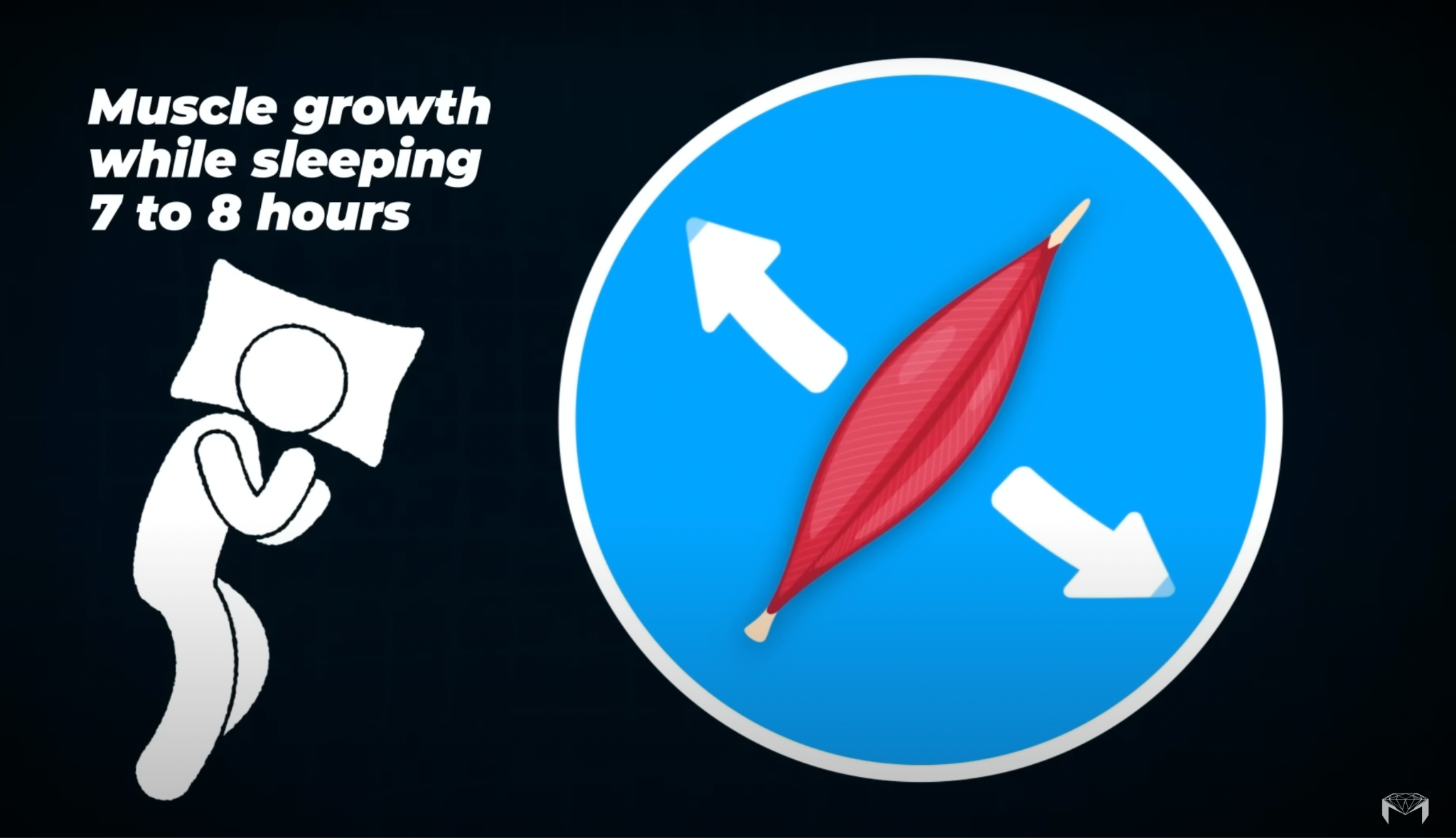
According to the Centers for Disease Control and Prevention (CDC), 1 in every 3 people in the US is not getting the recommended 7 to 9 hours of sleep per night on a regular basis (1). Now, there is an interesting trend here, 41.9%of adults in the US have obesity and it has increased over the past decade. No one denies that multiple factors play a role, but sleep and modern lifestyle are the main factors. let’s dive into the science behind this powerful connection!
We need to understand the stages of sleep first and how each stage contributes to fat loss:

Our sleep cycle consists of two main types: Non-REM sleep, which has three stages, and REM sleep. The entire sleep cycle takes about 90 to 110 minutes to complete, and we cycle through it multiple times each night.
Alright, let me simplify the stages. Consider falling asleep as starting a movie. Non-REM sleep is like the opening scenes of this movie, setting the stage for the story to unfold.
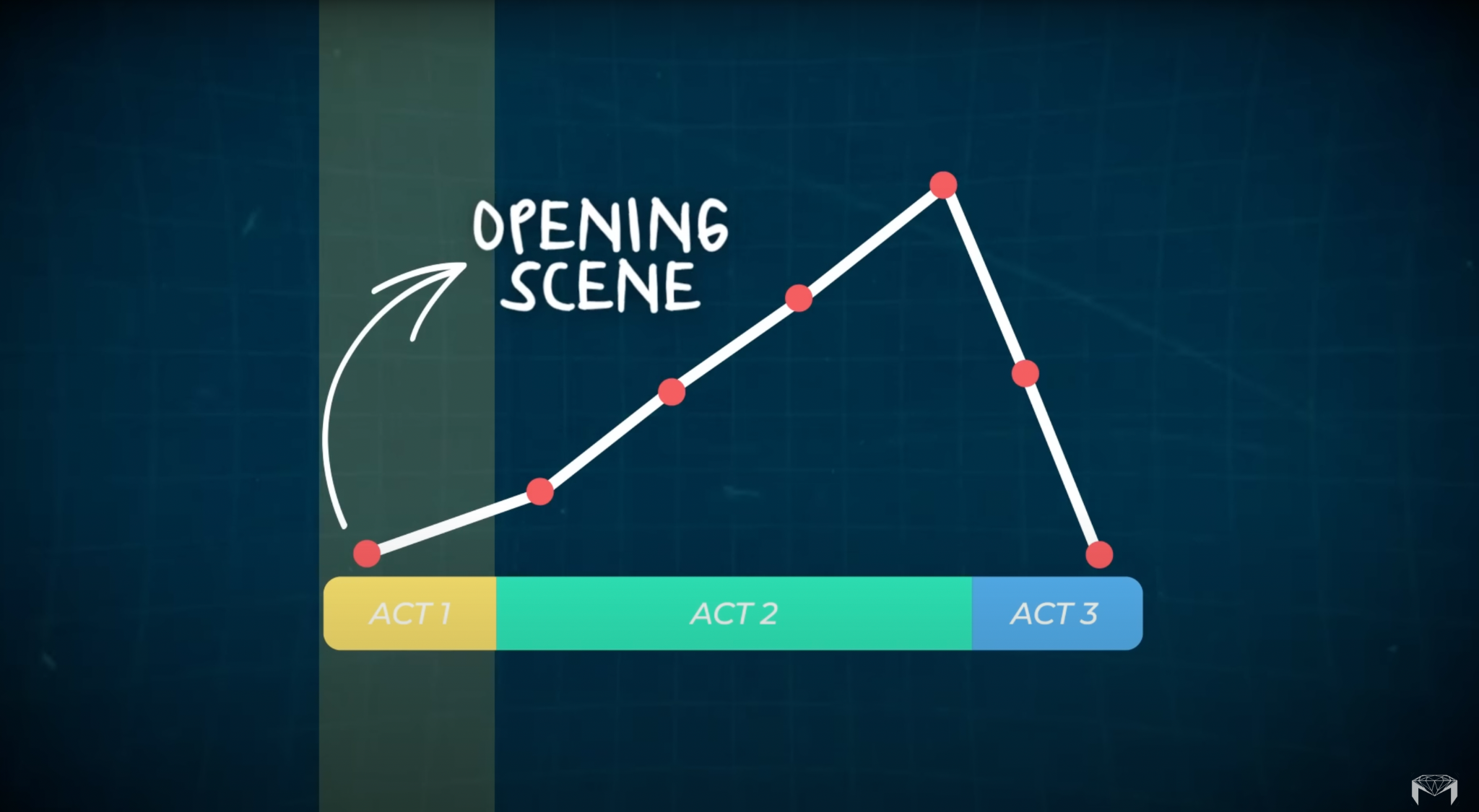

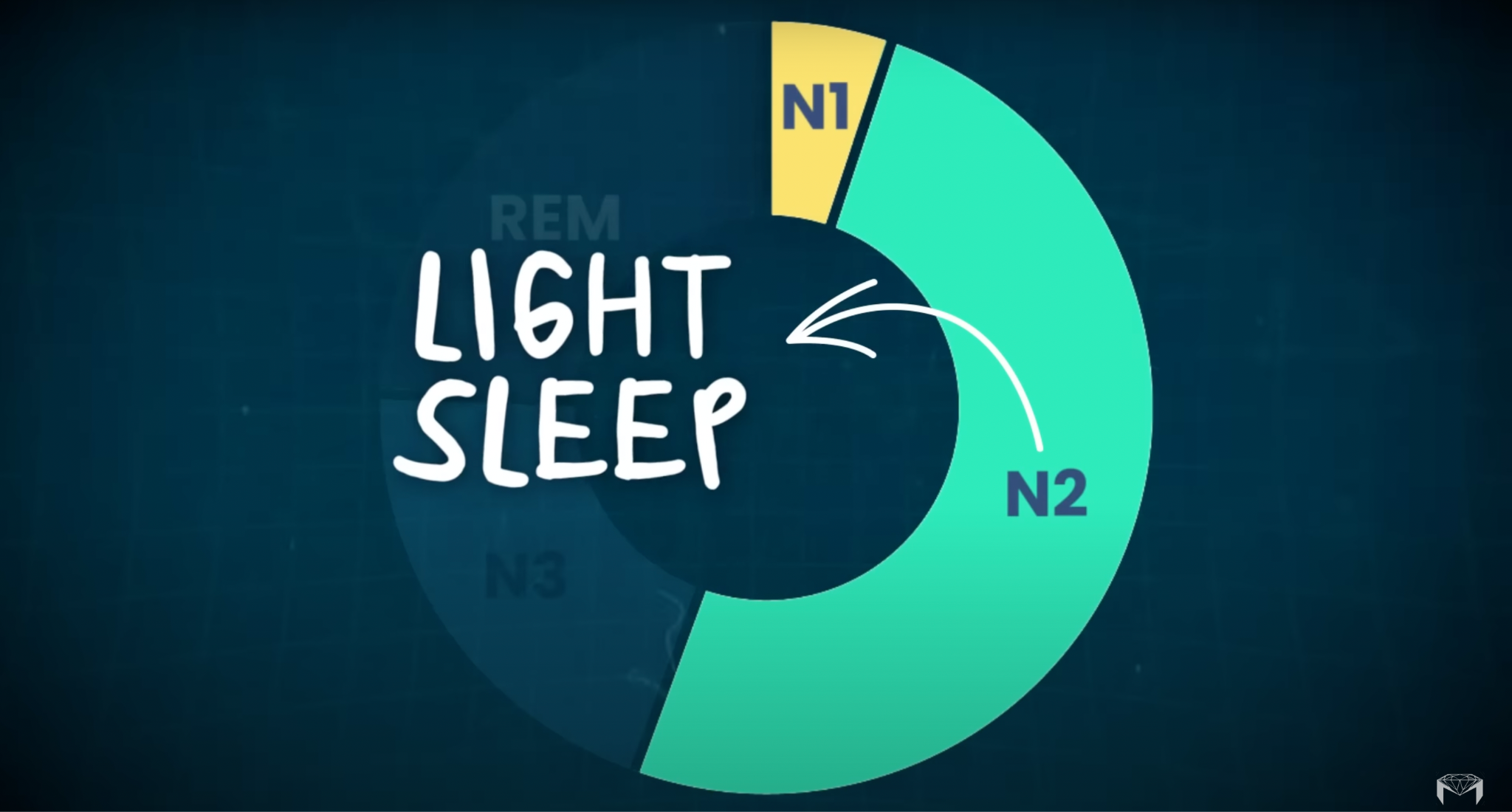


In simple terms, disruption or little sleep will lead to a state of:
Therefore, to properly maintain a healthy metabolism and tissue health, you need a minimum of 4 to 6 sleep cycles a night.
A 2012 Swedish study published in The Journal of Clinical Endocrinology & Metabolism (2) revealed that sleep deprivation not only increases calorie intake by 250-300 calories, but also enhances cravings for high-carb, junk food, and sweets.(3, 4). So, there is a science behind why after a restless night of sleep or after only getting 4-5 hours in, you find yourself reaching for that chocolate muffin or large pizza.
This how important your sleep is, it makes you make better food choices.
Digging deeper into more scientific studies, A 2022 clinical trial with 80 adults found that those who increased their sleep duration cut their daily caloric intake by about 270 kcal. If maintained long-term, this could lead to a weight loss of roughly 26 lbs over three years.
A 2018 study by Wang and colleagues had a group of participants on a caloric restricted diet where separated into two groups:
Group A slept normal hours
Group B slept 1 hour less for 5 nights.
The results were staggering, both groups lost equal amounts of weight due to caloric restriction but what was lost exactly is the interesting part.
The group that slept enough hours lost approximately 83% of fat
The group that slept 1 hour less per day lost 85% Muscle Mass.

This study simply highlights the importance of sleep and its essence to true body recomposition. It is in my own experience if we truly want to achieve pure fat loss we simply have to pay more attention to how much sleep we are getting.
Another study also researched the effects of our hunger hormones, Leptin and Ghrelin. Leptin is produced by your body's fat cells and its main job is to tell your brain that you've had enough to eat. Ghrelin, on the other hand, is known as the "hunger hormone." It's released primarily in the stomach, and when your stomach is empty, ghrelin goes to the brain and says, "Hey, we need food down here!" Together, leptin and ghrelin help regulate your hunger and fullness signals, keeping your food intake in check.
According to research, sleep deprivation decreases leptin by %10 and increase ghrelin by %28, which means not only do you lose less fat but you also feel hungrier when you sleep less


Here comes the important question, how many hours of Sleep are needed?
This can vary according to age, but the general guideline for adults is 7-9 hours of sleep a night.
Below is the recommended hours of sleep by the Sleep Foundation:

So, how can we get the best sleep quality?
STEP1. Regularity

This is not where I will tell you,’ Go to bed early and wake up early’. There's no "one size fits all" bedtime.
According to the sleep foundation, there are different sleep patterns, also known as chronotype, which is your body's natural preference for when you like to sleep and wake up. It's like your body's own built-in schedule for sleep and wakefulness. This is where the terms early birds and night owl come from.
The point here is, you have to know what pattern works the best for your body and schedule and stick to it.
Your body loves routine and setting a consistent sleep schedule can significantly boost your sleep quality and metabolism.
go to bed and wake up at the same time each day, even on weekends and days off if you can. This practice helps regulate your body's internal clock and ensures that you reach each stage of sleep the recommended number of times per night. Remember that it should be tailored to your needs and lifestyle. Ideally, align your sleep cycle with the natural rhythm of daylight and darkness for the best health benefits.
STEP2. Darkness

Simply, Light tells the body it is time to be awake, and darkness tells the body it is time for sleep. Our bodies are programmed to respond to light and darkness. whether it is natural sunlight or artificial light from lamps and electronic devices. And in response to that Melatonin hormone, which is the hormone that promotes sleepiness gets either ‘stimulated or suppressed’.
Different types of light produce different effects on our brains. For example, blue light is a type of light that comes from the sun but is also emitted by LED lights and electronic devices including your TV, phones, tablets, and computers. This light has a specific range of wavelengths, somewhere between 400 to 495 nanometers, and the part that really gets to us is around 460-480 nanometers.
Here's how it messes with your sleep:
When you look at your phone or other sources of blue light, your eyes detect this light and send a message to your brain. Your brain has a special area, called the SCN, which acts like a master clock. When it gets the message that you're seeing light, it thinks it's daytime. The SCN tells another small part of your brain, the pineal gland, to stay off. This gland's job is to produce melatonin, when it's dark, which helps you sleep. Because the SCN thinks it's daytime due to the blue light, it tells the pineal gland not to produce melatonin. This means that your electronic devices induce similar effects to sunlight and being exposed to them around your sleep time suppresses melatonin production and makes it harder for you to fall asleep.
Furthermore, light exposure can make it more likely that you wake up between cycles, leading to fragmented rest.
Two things I highly recommend:
FIRST: Stop using your electronic devices at least 30 min before your sleep time, but If you can’t do this, I propose two other solutions:
SECOND: dimming down the lights in your room 1-2 hours before bed, this is also an incredible trigger to your brain that your sleep time is near.
But, If you are not a fan of darkness, recent studies have discovered red light to be the best color light to help you sleep, because it doesn’t suppress melatonin production and might even help with sleep quality.
STEP3. limit your caffeine

Coffee can sabotage your sleep quality and negatively affect your weight loss plan.
Caffeine is a stimulant. It has the ability to cause alertness and wakefulness which is why we love having it in the morning. Coffee, energy drinks, and pre-workout are the most common caffeine-containing drinks and most people take them on a daily basis.
That being said there are three massive hidden features of caffeine.
The half-life of caffeine is about 5 hours and a quarter-life of about 10 hours. So that means after 5 hours of having a cup of coffee, 50% of the caffeine is still floating
around in your bloodstream and still 25% after 10 hours. So if you have a cup of coffee at 2 pm in the afternoon, that means at midnight you still have a quarter cup of coffee in your system.
You might say, I can drink a cup of coffee right before I sleep and fall asleep right away. Well, the quality of your sleep is what will be affected the most.
So here is the tip: Reduce/Control Caffeine intake:

The FDA indicates that it is generally safe for adults to consume up to 400 milligrams of caffeine per day. However, there can be a lot of variation in the way people respond to and metabolize caffeine, some people might not be able to tolerate that much.
My clients had the same problem, not knowing the effects of caffeine. Drinking an extra cup past 2 pm.
The solution, at the very latest, I would stop consuming caffeine between 11 am to midday If i felt dangerous. That was a hard cut-off for caffeine intake and this improved my sleep and overall gains dramatically.
STEP4. limit your alcohol

While alcohol can make you feel sleepy and even help you fall asleep faster, it is not a sleep aid, it is a sedative. This is why the quality of sleep you get after drinking is often far from ideal.
Alcohol suppresses REM sleep at least during the first half of the sleep period (4), which is the stage associated with burning calories during sleep and with memory and learning. And let's not forget the frequent bathroom trips! Alcohol is a diuretic, meaning it increases urine production and can often lead to multiple awakenings during the night.
According to the Sleep Foundation, moderate amounts of alcohol: two servings of alcohol per day for men or one serving per day for women, decreased sleep quality by 24%. and Having more than two servings of alcohol per day for men or one serving per day for women decreased sleep quality by 39.2%.
STEP5. temperature

You might not have realized this, but your bedroom's temperature plays a crucial role in how well you sleep. A room that is too hot or too cold is not ideal for good-quality sleep.
The science behind this is your body temperature naturally fluctuates throughout the day and night, following a circadian rhythm. Body temperature decreases during the evening and reaches its lowest point in the early hours of the morning. This helps to initiate and maintain sleep.
According to sleep experts, the ideal room temperature range for sleep is between 18-20 C(64-68 degrees Fahrenheit). Having your bedroom at this optimal temperature can mimic your body's natural temperature drop, signaling to your body that it's time for sleep. Therefore, maintaining a cooler room can potentially enhance your sleep quality by aligning with your body's natural sleep-inducing processes.

Keeping your room within this cooler temperature range can help facilitate this process, leading to better, deeper sleep.
STEP6. Walk it out

Picture this: You're lying in bed, the minutes are ticking by, and sleep just isn't happening. What do you do? Well, let's talk about it
Here's a quick tip for those restless nights: If you can't fall asleep after 20-30 minutes, don't lie in bed. Leave the room and engage in a quiet activity like reading or meditation.
Try not to eat or drink anything other than water. And most importantly, don’t use your phone.
The idea behind this tip is based on cognitive behavioral therapy for insomnia. The goal is to break the association your mind might be forming between your bed and the struggle to fall asleep.
By getting out of bed when sleep isn't happening, you're sending a message to your brain that bed equals sleep, not wakefulness and frustration.
So, from this, we understand how underrated sleep is, and that quality is really a big deal when it comes to sleep. This is why the 7 hours of sleep might have felt more refreshing for you than the 10-hour sleep on a weekend. Follow these steps and you will see a dramatic change in your energy, gains, and overall health.
If you sleep under 6 hours a night, you are setting yourself up for an uphill battle with your metabolism. Sleeping 6 hours a night or less will slow down your BMR and contribute to chronic stress, leading to burnout, weight gain, and overall breakdown of your body.
* How to track your sleep quality.

Lastly, if you are interested in knowing your sleep quality and you have an Apple watch or other wearable devices, there are many application that tells you the quality of sleep and how much time you spend in each stage.
The two highest-rated sleep trackers app are Sleep Score and Sleep Cycle, they are available on both IOS and Android
They give you a detailed analysis of your sleep stages to monitor your sleeping pattern from bedtime until you wake up which later can be used to improve your sleeping habits. They have many different other features, like sleep tips, smart alarm clocks, and your weekly sleep data. Give it a try.
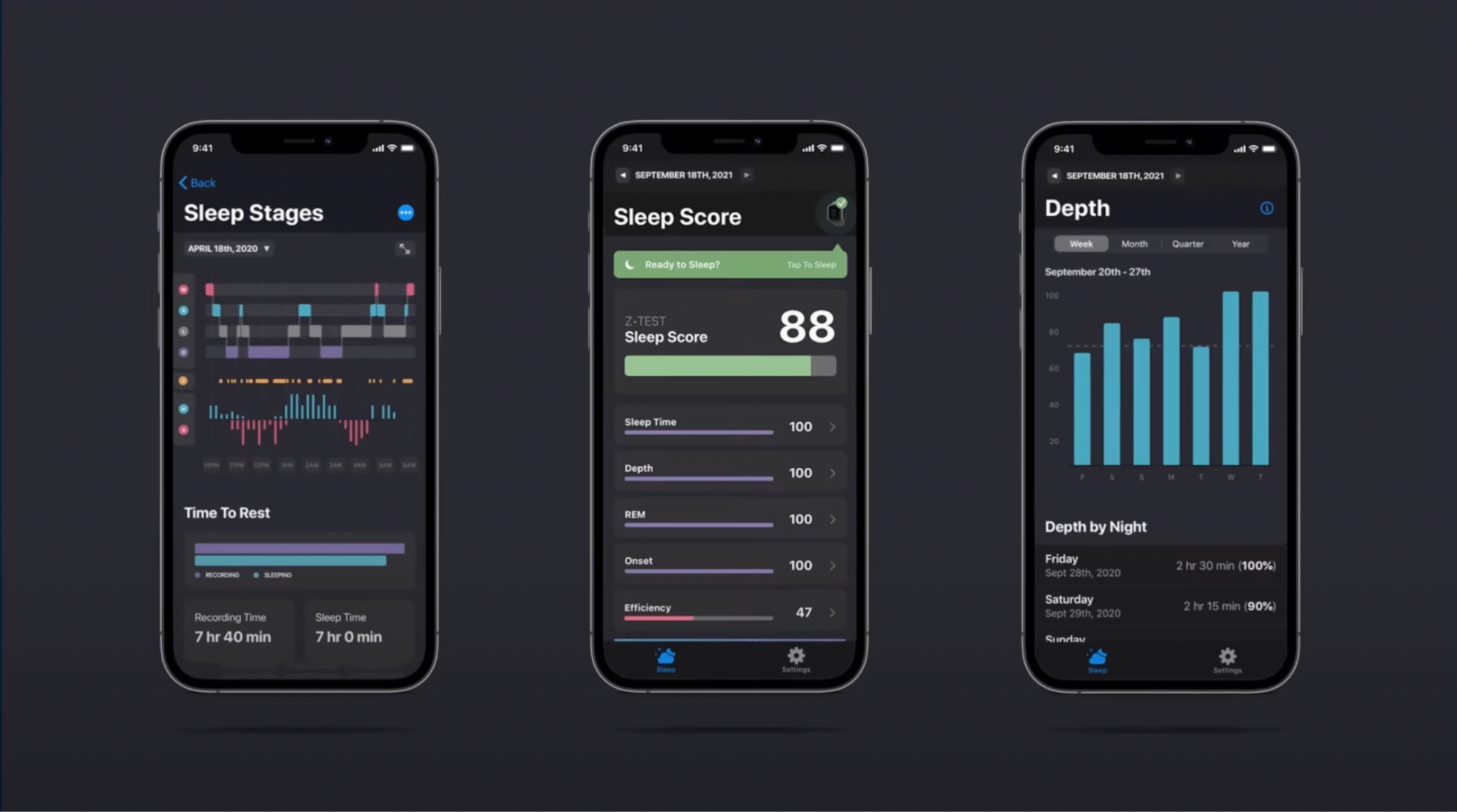


The Best diet is the one that is low in carbs, WRONG
The best diet is the one that is beneficial for your Gut bacteria and you can be consistent with it at the same time.
What if I told you, you can literally use your gut bacteria to Get Lean? Shocking right?? This is a whole new revolutionary science that could change the weight loss game forever.
What I am about to share here is the missing piece in your fat loss puzzle.
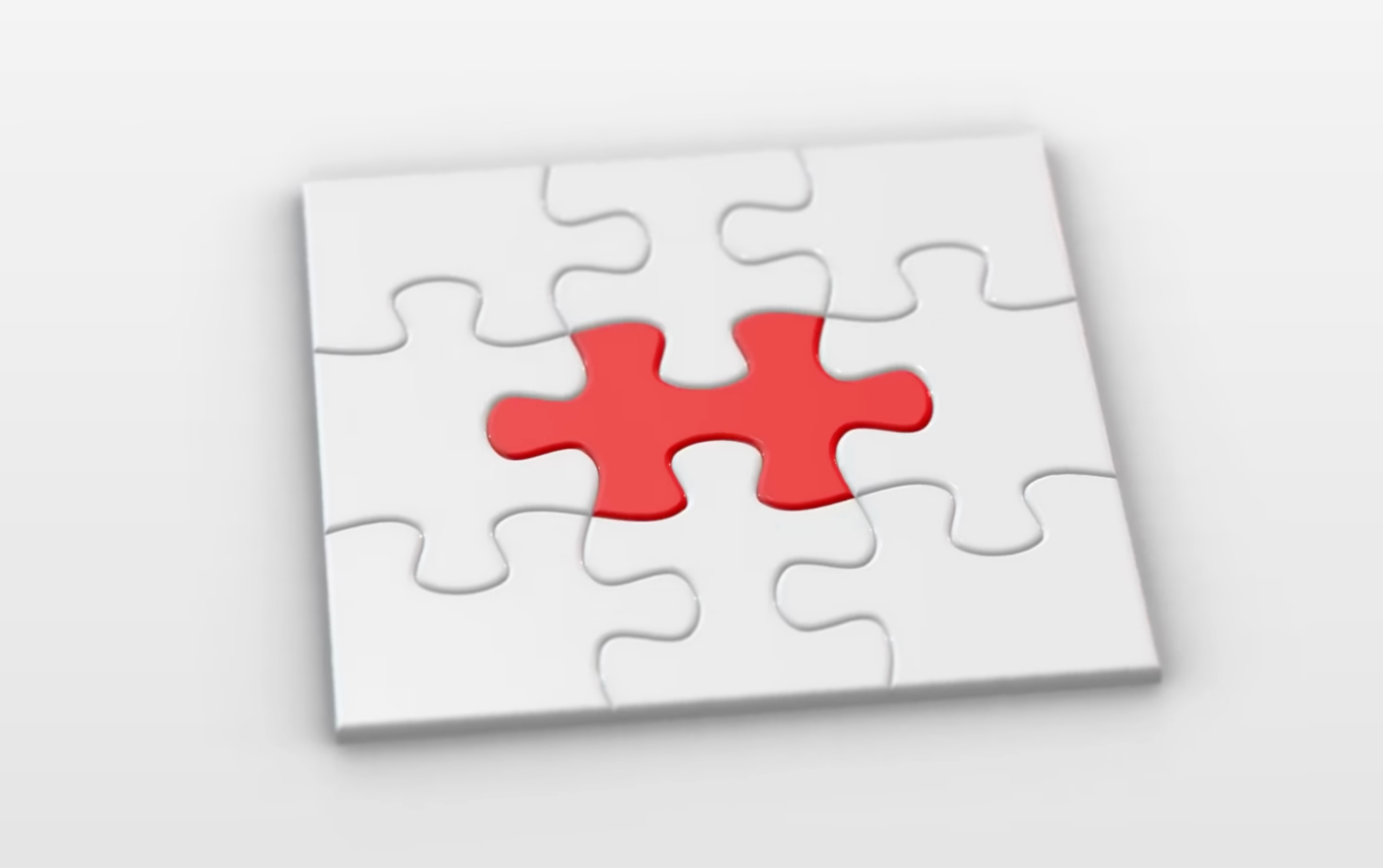
On September 27 2022 the WHO reported More than 1 billion people worldwide are obese – 650 million adults, 340 million adolescents, and 39 million children. This number is still increasing. In the US 42% of adults are overweight and obese and the number is rising dramatically.
Additionally, (WHO) recognizes Obesity as a Disease. Women with more than 30% body fat and men with more than 25% percent body fat are considered obese. If you are within these ranges, this video is for you.

You might be wondering, how is obesity related to our gut bacteria?
Well, the newest research has shown that people with Obesity have different Gut bacteria!
Of course, Obesity is the result of a combination of genetic and environmental factors, But it’s very likely that your gut bacteria, also known as Gut Microbiome is keeping you from losing weight.
So, before mentioning the 10 foods, let's dive into the fascinating world of gut microbiota and their effect on our weight.
Hippocrates says’ All disease begins in the Gut’, and this gets proven over and over again.
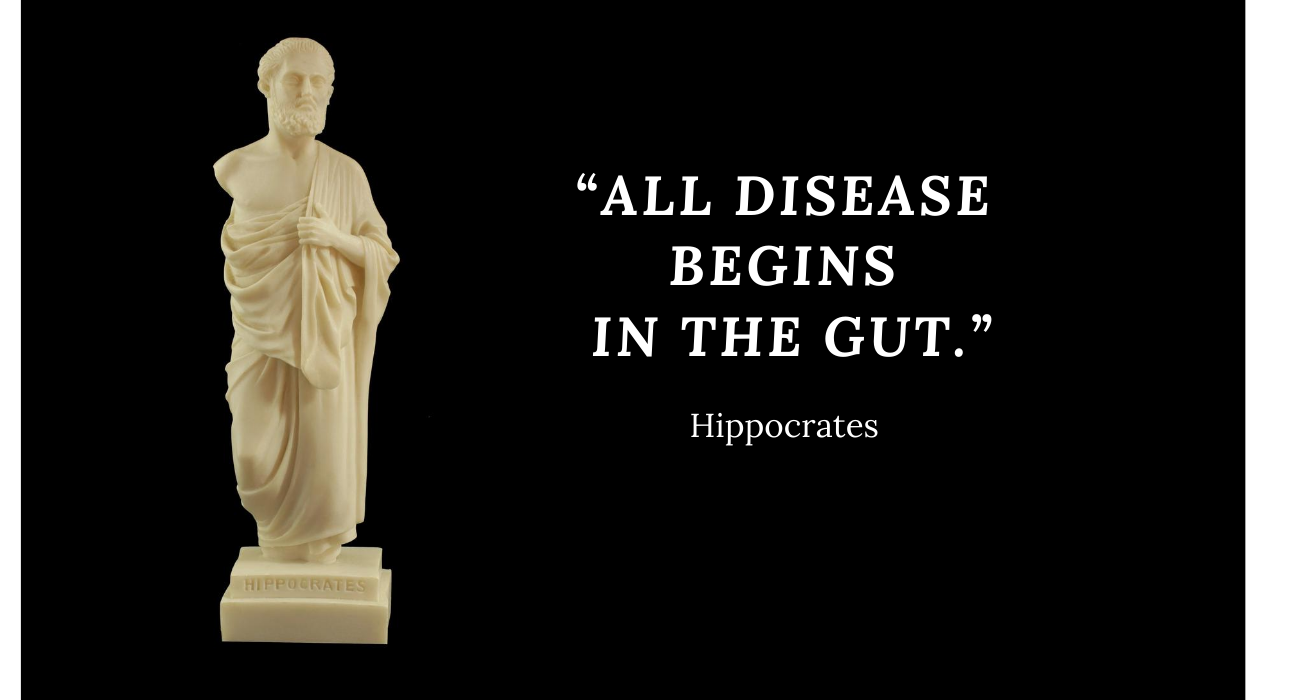
Gut Microbiome is a community of microorganisms ( Bacterias, Protozoa, Archaea, and Fungi), that live mainly in our Intestines and have a variety of health benefits. According to the Department of Research at Harvard University, About 100 trillion bacteria live inside your digestive system.(3)
This is an insane number when you think about it, they have 1000s different species, which means 100-fold more genes than what is found in the human genome. (4)
The gut microbiota have vital functions:
So!! Your Gut Microbiota can be referred to as the Missing Organ, The Hero behind your Good health. Let’s see why.
Now you may be wondering, do we all have the same species of Gut Microbiota?
This is where this gets interesting, The answer is a definite NO!
Two Random humans are about 99.9% identical to one another in terms of their host genome[5], but can be 80-90% different from one another in terms of the microbiome of their gut [6].

Let me share an interesting study that was done on an Identical twin.
Gut Microbiotas from identical twin pairs (one of whom was obese and the other was lean), were implanted in Germ-Free Mice and were fed the same food. They found that
the mice receiving microbiota from the obese twin gained more weight and developed insulin resistance, compared to mice receiving microbiota from the lean twin. (9)
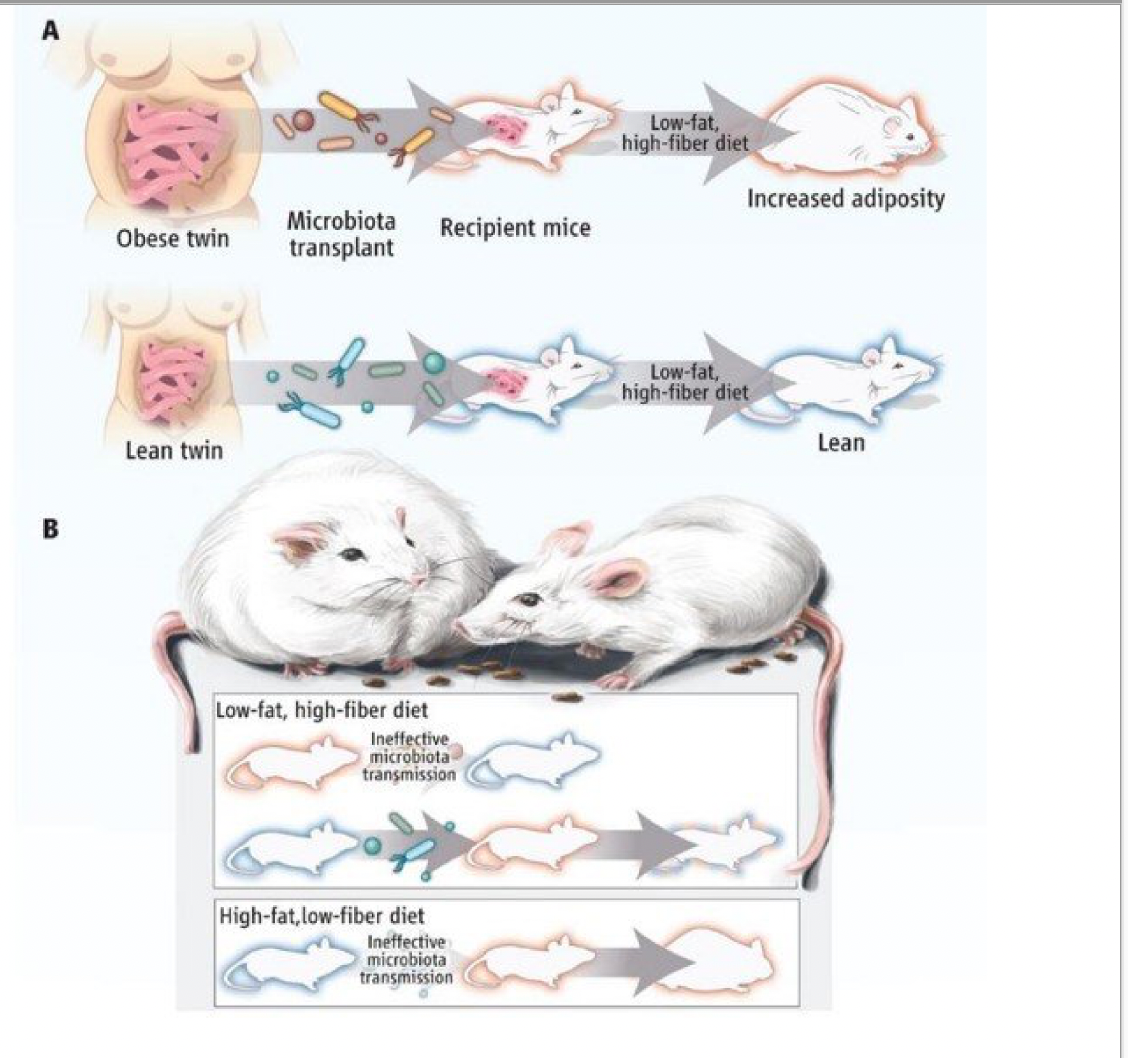
This simply means that diet and environment can shape gut microbial composition and, in turn, can have direct effects on our body composition and the ability to lose weight. (7).
These little workers inside our gut can affect how our bodies store and use energy from food.
Imbalance of these Bacterias is known as DYSBIOSIS. Which can make it more difficult for our bodies to absorb nutrients and burn fat. This puts you at a higher risk of developing obesity and metabolic disorders like type 2 diabetes.

Research has also shown that the gut microbiota can influence our appetite and food cravings. When we have an imbalance in our gut microbiota, it can lead to an increase in the production of hormones that stimulate appetite, like ghrelin. This can lead to overeating and weight gain. (8)
Here is the GOOD NEWS, you are capable of changing your gut microbiota diversity by 57% through eating the right food, whereas genes account for no more than 12%.

By dietary change we mean making your diet more diverse, not ditching your favorite food completely. It is proven that a diet consisting of different food types can lead to a more diverse microbiome.
Let’s List the 10 foods!

For all my coffee addicts out there, your morning coffee does more than just wake you up. it can actually help you lose weight by boosting your metabolism and reducing appetite AND It can also help you increase the diversity of your gut microbiome which further supports your weight loss journey.
What I usually recommend for my clients is to make coffee their main pre-work drink. It doesn’t just give you a great boost but it is also empty of calories, it’s natural, and it doesn’t have any food coloring or sweeteners. This makes it the perfect pre-workout drink. You can have up to 2-3 cups a day.
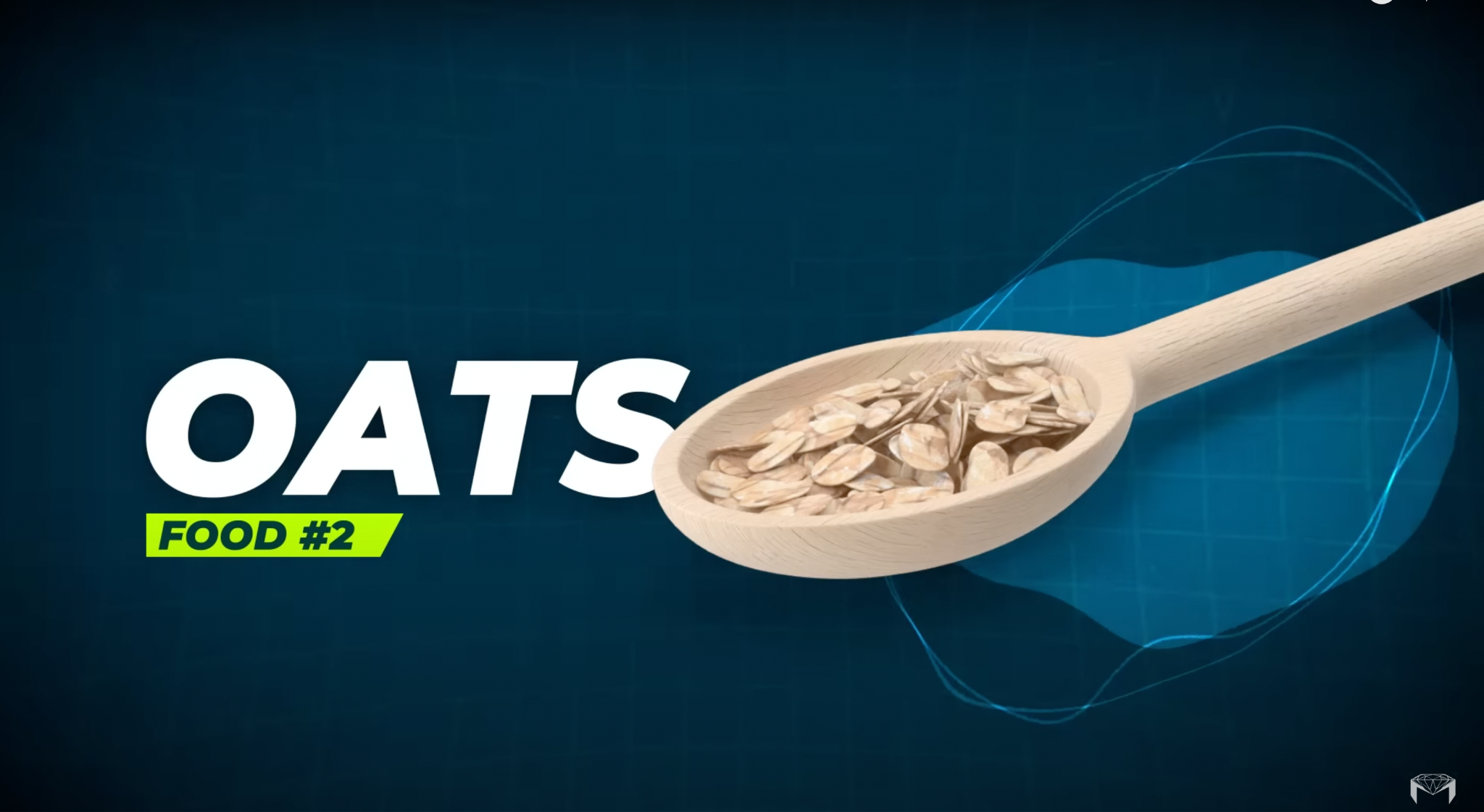
Think of gut microbiota as mini laborers in your digestive tract. They thrive on fiber like that found in oats. The fermentation of this fiber by your gut workers produces short-chain fatty acids (SCFAs) which promote gut health, decrease inflammation, and aid nutrient absorption. Additionally, oats have antioxidant-rich polyphenols providing anti-inflammatory benefits. They're also favored by bodybuilders due to their high satiety index, keeping you fuller for longer.
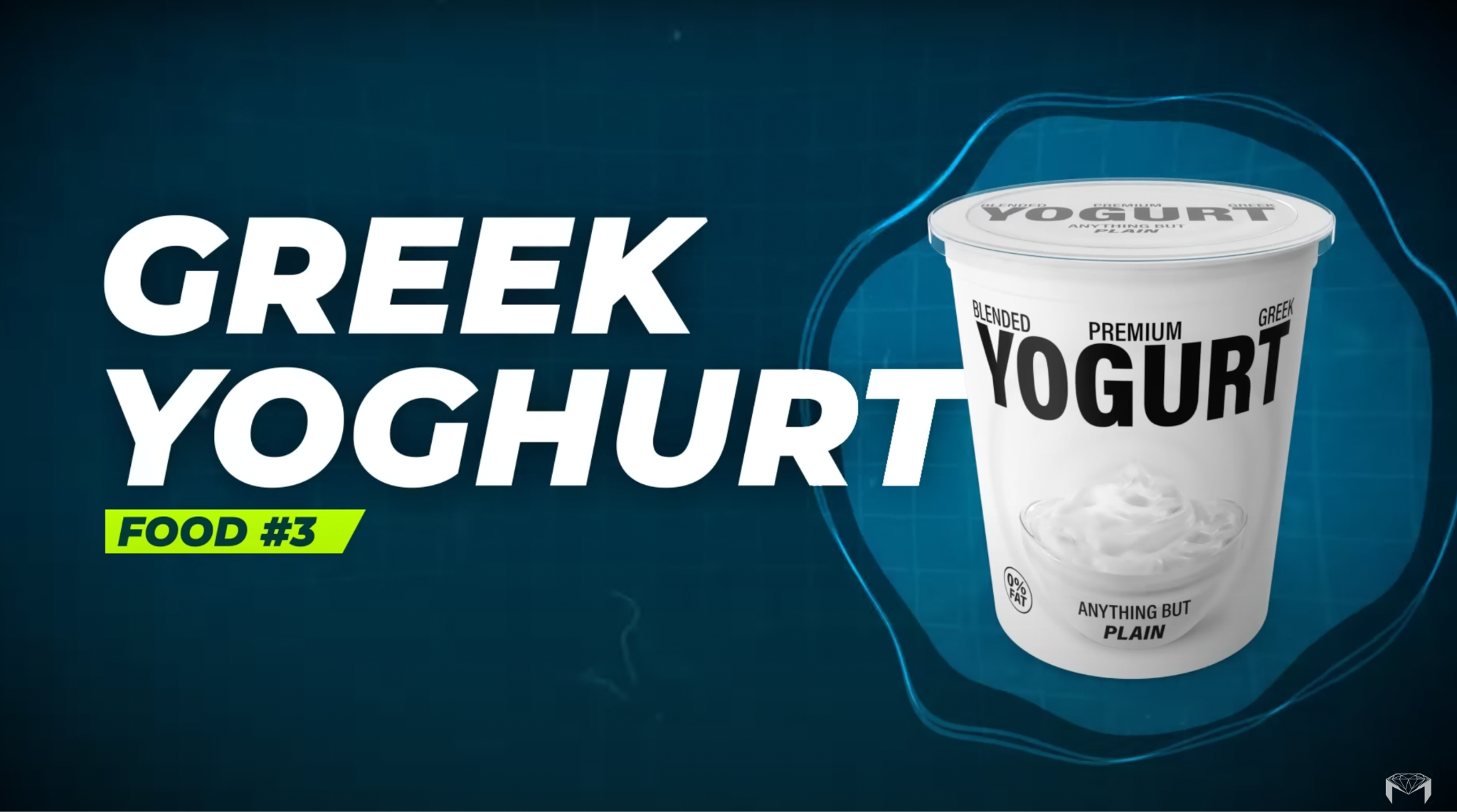
I absolutely love this one, Greek yogurt is like a superhero for your gut! It's packed with tiny living organisms called probiotics. These probiotics produce short-chain fatty acids like butyrate, that are like little shields for your gut lining, protecting it from inflammation and damage. Plus, Greek yogurt is high in protein, which is like fuel for your muscles and helps to keep you feeling full and satisfied.

I call it the magic oil!! It's time to make EVOO your main cooking companion, and let it work its magic on your gut microbiome.
And it’s not just your gut, EVOO could lower the risk of heart disease, stroke, and decrease type II diabetes.
EVOO also has anti-inflammatory properties, which can help to reduce inflammation in the gut and support gut barrier function.
But let's be real, measuring out portions can be a challenge. So, to make things easier, I recommend using a spray. I recommend this brand….(mention brand here).

The WORST enemy of your Gut Bacterias are Suger and artificial sweetners. Let alone the Suger spikes and extra calories that makes losing weight close to impossible.
By eating too much sugar you will be feeding the bad guys. (the pathogenic bacterias in your gut). And it goes beyond that, Sugar causes imbalance in your gut microbiotas and causes inflammation of the gut lining, this will mess with your food absorption and causes weight gain and Insuline resistance.
If your are really craving to drink something fresh with your meal! Do your gut this favor and ditch soft drinks for good. Your gut needs the right hydration to thrive. I would normally suggest plain water, but sparkling water is a good step to start with as long as they are free of artificial sweeteners.

Your Gut Bacterias LOVE protein!!
Just like a builder needs the right tools to construct a building, your gut microbiota needs protein to grow and thrive.
Chicken is high in protein and low in carbs, making it a great weight-loss food option.
That is why, chicken, as a good source of protein, can support gut health by promoting the growth of your gut bacteria. However, the way the chicken is prepared and cooked can also impact its nutritional value and potential impact on gut health. For example, fried chicken or chicken with added artificial ingredients may not be as beneficial for gut health as grilled or baked chicken.

Sushi lovers, I’ve got good news for you!! The perfect combination of Healthy fat and lean protein, exactly what your gut need.
Salmon is high in protein, which can help to increase satiety and reduce hunger, making it easier to stick to a calorie-controlled diet. Also, salmon is rich in omega-3 fatty acids, which can help to reduce inflammation and improve insulin sensitivity, both of which are important for weight management.
If you are a big sushi fan, don’t hesitate to include it in your weekly diet BUT always try to go for those that are made without mayonnaise and cream cheese..

Also known as a superfood!! They are low in calories, packed with fiber, and can promote weight loss by keeping you full and satisfied. 1 cup of raspberries has 64 calories, blackberries have 65 calories, blueberries have 86 calories, and strawberries have 48 calories.
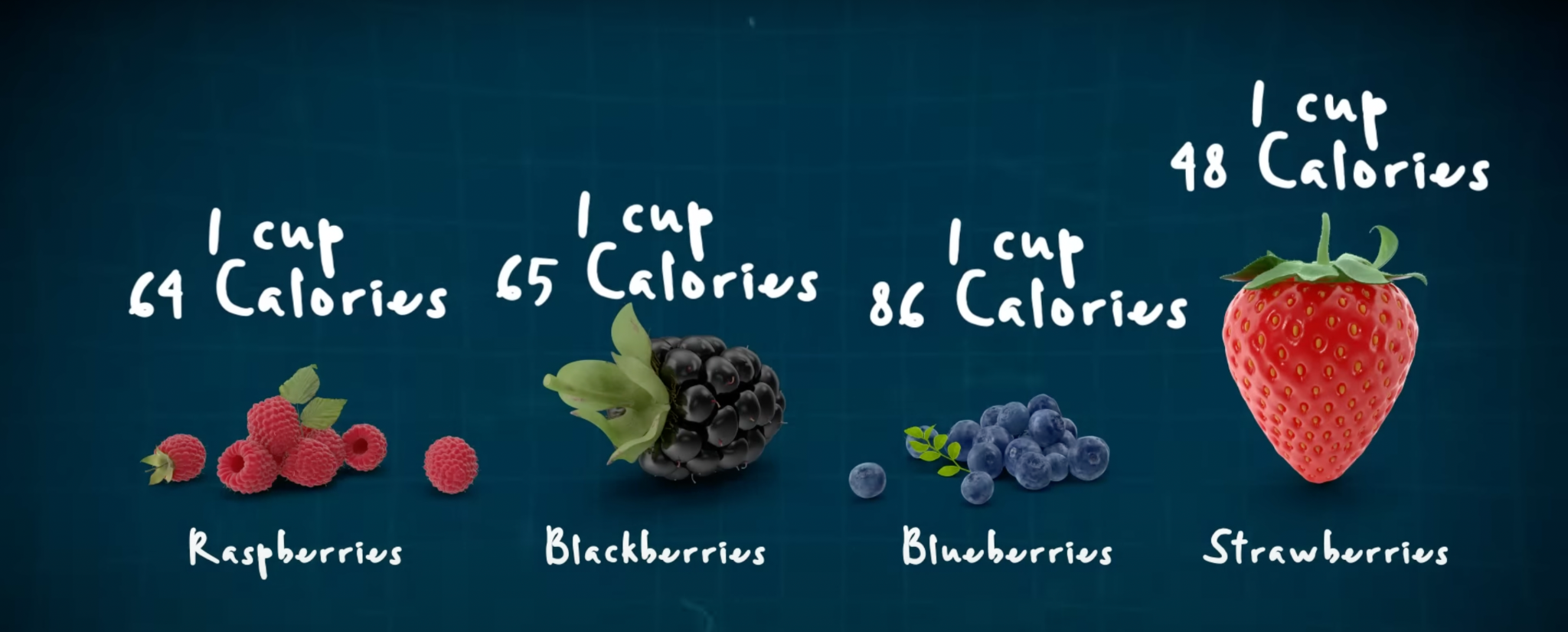
They're also rich in antioxidants, which can protect your gut from damage and promote the growth of your gut microbiota.

Who doesn’t love eggs? Eggs are your ultimate food hack if you want to lose weight and improve gut health without sacrificing taste or satisfaction.
Eggs are rich in protein and act like a natural appetite suppressant, more importantly, eggs are also a prebiotic food, they contain compounds that can help to feed and nourish your gut microbiome.
So if you want to maintain a healthy weight, reduce the risk of chronic diseases, and support your gut well-being. Make sure to include eggs in your diet.

I saved the best for the last, you can still enjoy your weekend drink while trying to lose weight!
You might be wondering how wine is good for your gut microbiota.
Any fermented food or drink can be Gut friendly and Wine can be too if it’s taken in moderation.
Wine is rich in Polyphenols which have been shown to have strong prebiotic effects.
In short, The types of Microbiome you have, change how your body reacts to the food you eat and in turn affect your body fat.
I will end this video on an important note, FASTING
Eat your last meal of the day early and your first meal of the day late, this promotes both weight loss and Gut bacteria diversity. Give your gut a break for at least 12-14 hours a day.